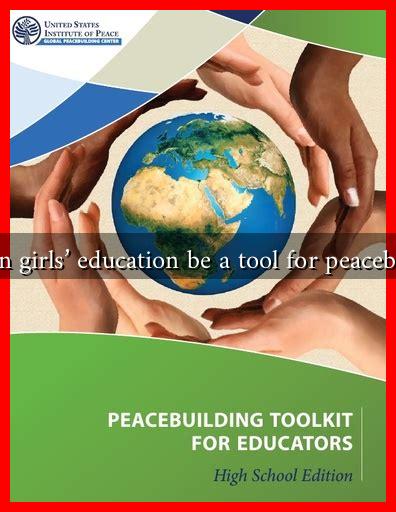-
Table of Contents
How Can Girls’ Education Be a Tool for Peacebuilding?
Education is often heralded as a fundamental human right, yet millions of girls around the world are denied this opportunity. The implications of this denial extend far beyond individual lives; they ripple through communities and nations, contributing to cycles of poverty, violence, and instability. However, investing in girls’ education can serve as a powerful tool for peacebuilding, fostering social cohesion, economic development, and political stability. This article explores how girls’ education can contribute to peacebuilding efforts globally.
The Link Between Education and Peace
Education plays a crucial role in shaping societies. It equips individuals with the knowledge and skills necessary to participate in their communities and economies. When girls are educated, the benefits extend beyond their immediate families to entire communities and nations. Here are some key ways in which girls’ education contributes to peacebuilding:
- Empowerment and Agency: Educated girls are more likely to become empowered women who can advocate for their rights and the rights of others. This empowerment fosters a sense of agency, enabling them to challenge societal norms that perpetuate violence and discrimination.
- Reduction of Violence: Studies have shown that higher levels of education among women correlate with lower rates of domestic violence and conflict. Educated women are more likely to reject violence as a means of conflict resolution.
- Economic Stability: Educated women contribute to economic growth, which can reduce poverty and the conditions that often lead to conflict. According to the World Bank, every additional year of schooling can increase a woman’s earnings by up to 20%.
- Community Engagement: Girls who receive an education are more likely to engage in community activities and decision-making processes, fostering social cohesion and collective action.
Case Studies: Successful Initiatives
Several initiatives around the world have demonstrated the positive impact of girls’ education on peacebuilding. Here are a few notable examples:
- Malala Fund: Co-founded by Nobel laureate Malala Yousafzai, this organization advocates for girls’ education globally. In regions affected by conflict, such as Afghanistan and Pakistan, the Malala Fund has supported local initiatives that empower girls through education, helping to create a more peaceful society.
- Girl Rising: This global campaign uses storytelling to inspire girls’ education. By highlighting the stories of girls who have overcome obstacles to pursue their education, the campaign raises awareness about the importance of girls’ education in fostering peace and stability.
- UNESCO’s Global Education Monitoring Report: This report emphasizes the role of education in promoting peace and security. It provides evidence that investing in girls’ education can lead to more peaceful societies, as educated women are more likely to participate in peace processes and governance.
Statistics That Matter
The statistics surrounding girls’ education and its impact on peacebuilding are compelling:
- According to UNESCO, if all girls completed secondary education, child marriage could drop by 64% in some regions.
- The Global Partnership for Education reports that every additional year of schooling for girls can reduce the risk of conflict by 10%.
- Research from the World Bank indicates that educated women are more likely to invest in their children’s education, creating a cycle of empowerment and stability.
Challenges to Girls’ Education
Despite the clear benefits, girls’ education faces numerous challenges, particularly in conflict-affected regions. These challenges include:
- Cultural Barriers: In many societies, cultural norms prioritize boys’ education over girls’, leading to systemic discrimination.
- Safety Concerns: In conflict zones, schools can become targets for violence, deterring families from sending their daughters to school.
- Lack of Resources: Many countries lack the necessary infrastructure and resources to support girls’ education, particularly in rural areas.
Conclusion: A Call to Action
Investing in girls’ education is not merely a moral imperative; it is a strategic approach to building peaceful societies. By empowering girls through education, we can break the cycles of poverty and violence that plague many communities. Governments, NGOs, and international organizations must prioritize girls’ education as a cornerstone of peacebuilding efforts. As we work towards a more equitable world, let us remember that educating girls is not just about individual success; it is about creating a more peaceful and prosperous future for all.
For more information on the importance of girls’ education, visit UNICEF’s Girls’ Education page.


